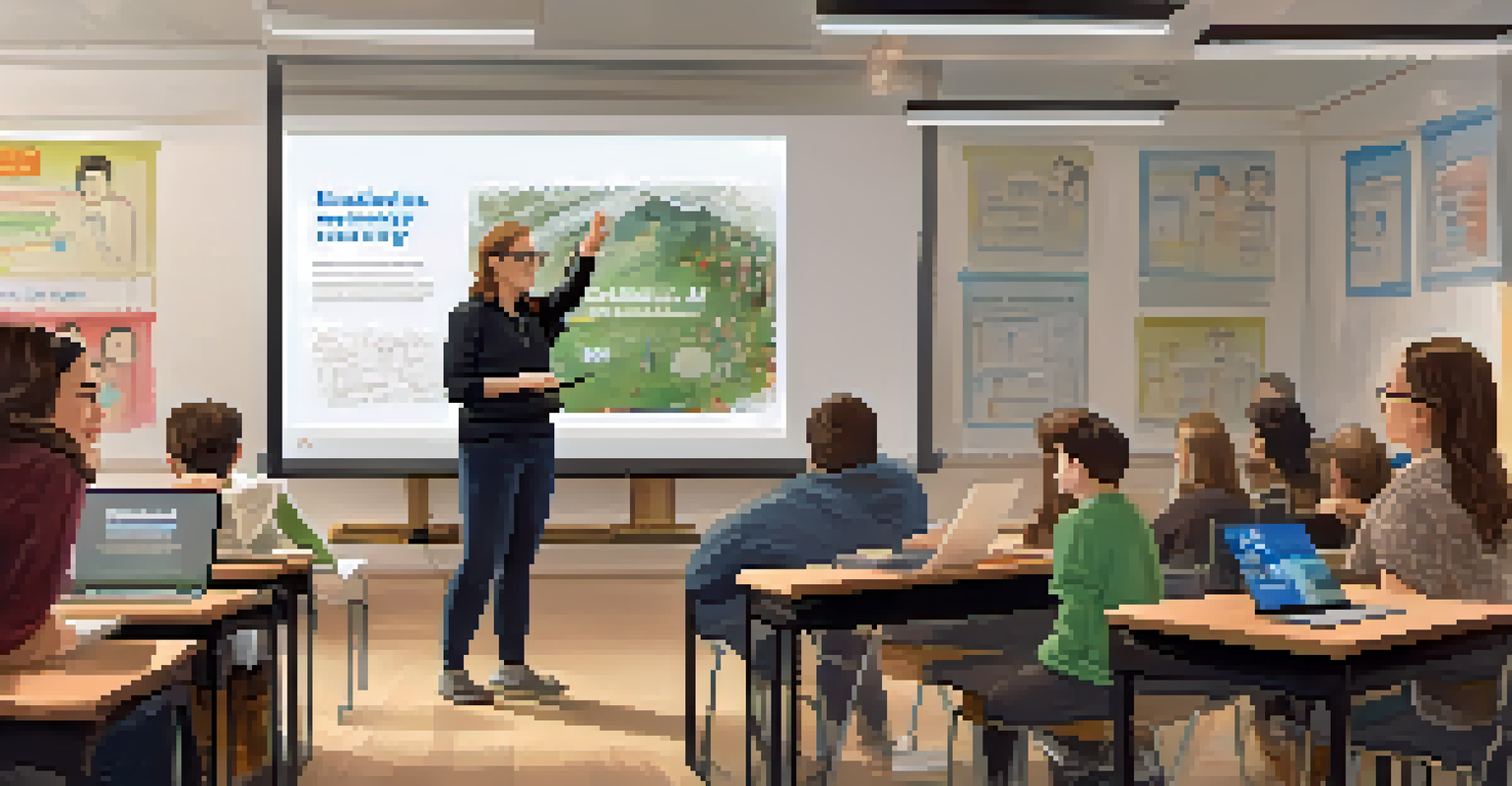Best Practices for Designing Engaging Virtual Classrooms

Understand Your Audience for Tailored Learning Experiences
To create an engaging virtual classroom, it's crucial to understand your audience. Knowing their age, background, and learning preferences allows you to tailor your content effectively. For example, younger students may respond better to interactive games, while adults might prefer case studies or real-world applications.
The greatest danger in times of turbulence is not the turbulence; it is to act with yesterday's logic.
Engaging students involves more than just delivering information; it requires creating a connection. A simple way to gauge your audience's needs is through pre-class surveys. This helps you identify common interests and challenges that can guide your lesson planning.
Remember, the more you know about your learners, the better you can tailor your approach. This not only enhances engagement but also fosters a sense of community, making learners feel valued and understood.
Utilize Interactive Tools to Foster Engagement
In the realm of virtual classrooms, interactivity is key to capturing attention. Utilizing tools like polls, quizzes, and breakout rooms can transform a passive learning experience into an active one. For instance, using a quick poll at the start of a lesson can instantly engage students and encourage participation.

Breakout rooms, where small groups can discuss topics in-depth, also provide a sense of collaboration. These spaces allow learners to share ideas, which can lead to richer discussions and deeper understanding. Imagine a virtual classroom as a lively café where everyone has a voice!
Know Your Audience for Engagement
Understanding your audience's background and learning preferences allows you to tailor your content for a more engaging experience.
By incorporating various interactive elements, you not only make learning fun but also promote retention. Engaged students are more likely to remember what they've learned, ultimately resulting in a more effective educational experience.
Create a Structured Yet Flexible Learning Environment
A well-structured virtual classroom helps students know what to expect, which can reduce anxiety and enhance focus. Setting clear objectives at the beginning of each session provides a roadmap for learners. For example, detailing specific goals for the day gives students a sense of purpose.
Tell me and I forget, teach me and I remember, involve me and I learn.
However, flexibility is equally important. The virtual environment allows for spontaneous discussions and questions, which can enrich the learning experience. Striking a balance between structure and flexibility keeps students engaged while also allowing them to express their thoughts.
Think of it like a guided hike: you have a trail map, but there’s room for exploration along the way. This approach not only fosters engagement but also encourages critical thinking and adaptability.
Incorporate Multimedia to Enhance Learning
Multimedia elements such as videos, infographics, and animations can breathe life into your virtual classroom. They cater to various learning styles, making it easier for students to grasp complex concepts. For instance, a short animated video can explain a difficult topic more effectively than a lengthy lecture.
Moreover, incorporating relevant visuals can keep students' attention and make lessons more memorable. Think of how a striking image or a catchy video can spark curiosity and enhance understanding. This method not only engages but also aids in retention.
Use Interactive Tools for Learning
Incorporating polls, quizzes, and breakout rooms transforms passive learning into an active and collaborative experience.
Using multimedia wisely creates a richer learning environment. By providing diverse content formats, you cater to different preferences and help ensure that all learners can connect with the material.
Encourage Active Participation and Collaboration
Active participation is vital for engagement in virtual classrooms. Encourage students to ask questions, share experiences, and contribute to discussions. This can be facilitated by creating a welcoming atmosphere where everyone feels comfortable expressing their thoughts.
Collaborative projects or group activities can further enhance engagement. For example, having students work together on a shared document fosters teamwork and can lead to a more dynamic learning experience. It’s like a virtual brainstorming session where all ideas are valued.
When students feel their contributions matter, they’re more likely to stay engaged. This sense of ownership over their learning can lead to deeper insights and a more positive classroom environment.
Provide Timely Feedback to Foster Growth
Feedback is essential in any learning environment, and virtual classrooms are no exception. Providing timely and constructive feedback helps students understand their strengths and areas for improvement. For instance, if a student submits an assignment, quick comments can guide them toward better performance in the future.
Consider using technology to streamline this process. Tools like automated grading systems can save time while still offering personalized insights. This not only keeps students informed but also motivates them to continue improving.
Build Community Among Learners
Creating a sense of community fosters participation and collaboration, enhancing the overall learning experience.
Regular feedback creates a culture of growth and learning. When students see that their efforts are acknowledged, they’re more likely to stay engaged and strive for better results.
Cultivate a Sense of Community Among Learners
Building a sense of community in a virtual classroom is crucial for engagement. Students who feel connected to their peers are more likely to participate and collaborate. This can be achieved through icebreaker activities or encouraging informal discussions before or after class.
Creating online spaces, such as forums or chat groups, also fosters interaction outside the classroom. Think of it as a virtual lounge where students can share ideas, ask questions, and support one another. This sense of belonging can significantly enhance their learning experience.

When learners feel like part of a community, they become more invested in their education. This emotional connection can lead to increased motivation and a more vibrant classroom atmosphere.